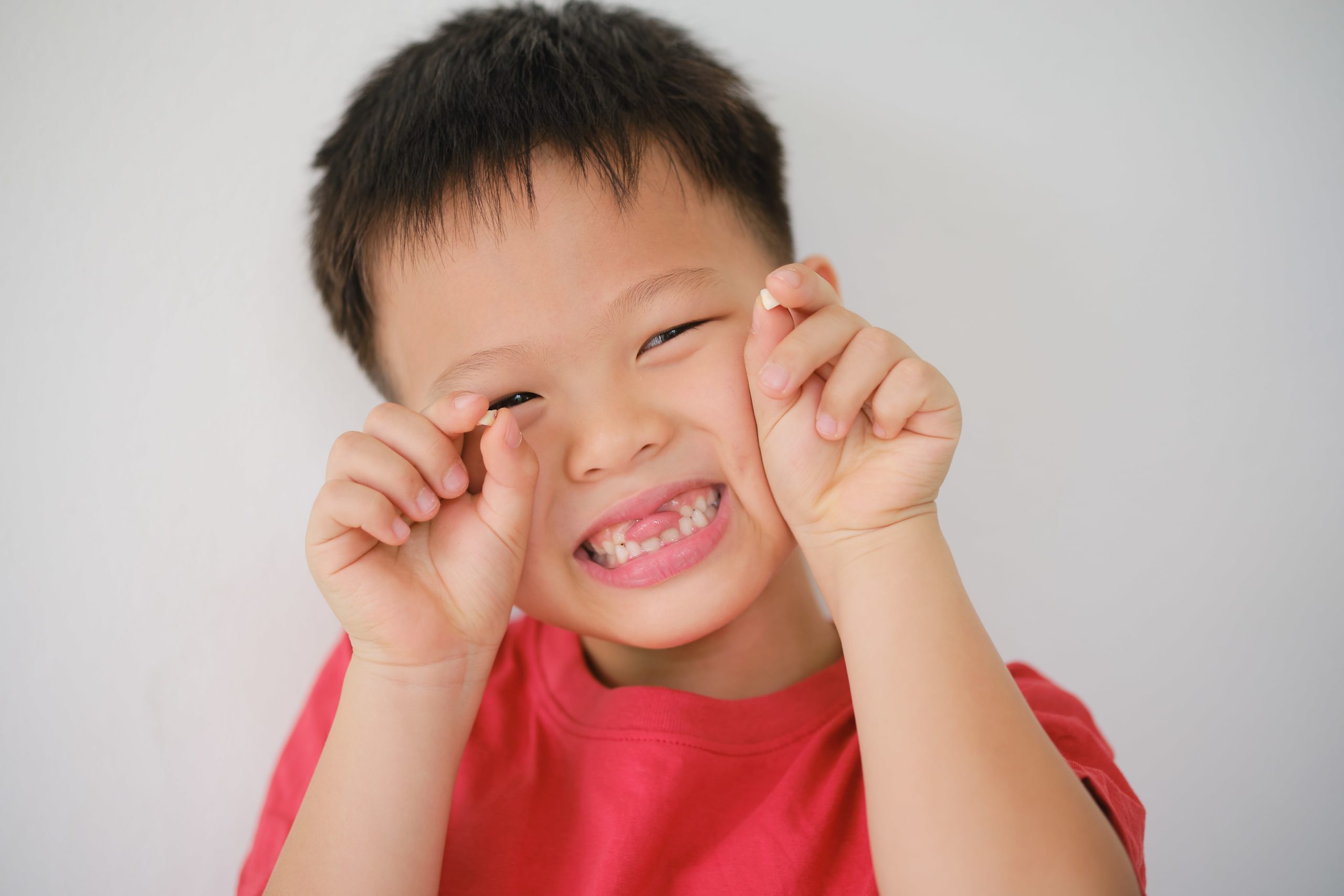There are a lot of exciting milestones your child will reach as they grow. Their first steps, first words, first baby tooth…and the first time they lose a baby tooth! Losing their baby teeth is an incredibly important part of any child’s development. Those primary teeth hold space for adult teeth as your child’s mouth grows, and they begin to fall out once the permanent teeth are ready to take their place.
Teething: every parent’s favorite phase.
Before baby teeth can fall out, they have to come in. Teething can start anywhere from four to eight months old. You’ll know it’s beginning when you notice swelling or inflammation around the gums. Your baby will also become quite cranky at times. After all, teething isn’t fun for anyone. You can help soothe their discomfort with teething toys, particularly those you can put in the freezer. And, of course, extra cuddles never hurt.
Caring for tiny teeth.
Dental care is just as vital for baby teeth as it is for adult teeth. If baby teeth fall out prematurely, permanent teeth can have a harder time growing into the right place and end up crowded. A good first step in caring for your child’s teeth is to schedule an appointment with a pediatric dentist early on.
You can begin brushing your baby’s teeth as soon as they appear with a soft children’s toothbrush and water, without toothpaste. Another method is using a soft, wet cloth to wipe over teeth and gums. As more teeth come in, you can begin using an infant-safe toothpaste with a soft toothbrush and upgrade to regular toothpaste once they’ve learned how to spit.
When do baby teeth start to fall out?
While every child — and their dental development — is unique, there is a fairly standard timeline you can expect. By 2 or 3 years old, they should have all 20 of their primary teeth. Fast forward a few years, and at about 6 or 7 years old, they should begin losing their first teeth. For most children, the front teeth are the first to go.
The lateral incisors — aka the teeth next to the front teeth — are usually the next to fall out, around age 7 or 8. Sometime between 9 and 12 years old, your child will lose their canine teeth, along with their first premolars, between 9 and 11. Second premolars are typically the last teeth to fall out, which happens between ages 10 and 12.
It’s okay to wiggle loose teeth!
While it may go against your parental instincts, you should encourage your kids to wiggle their loose teeth. Some children will have no problem with this, but others may be cautious. Over time, with regular eating and brushing habits and plenty of gentle wiggling, baby teeth will work themselves out.
Movement of a loose tooth is actually very important because a lack of motion can cause the gums to tighten up again and grow back up over the primary tooth. This could lead to a permanent tooth coming in before the baby tooth is out, which would require an extraction to fix.
Losing teeth can be scary for a lot of kids, but there are ways to make it fun and exciting. Remind them that loose and missing teeth are signs of growing up, and they’re on their way to becoming a big kid. And of course, you can’t forget the Tooth Fairy! Trading a tooth for a dollar (or a few dollars) is a deal any kid can get behind.
Keep in touch with our team!
Children’s Dentistry is proud to offer kids and their families the best dental care experience possible, with high-quality services, experienced staff, and convenient locations. And because we believe that every child deserves that level of care, we provide easy scheduling and affordable care options.
Schedule an appointment today.

